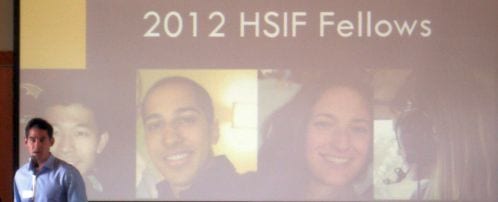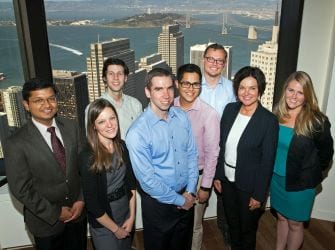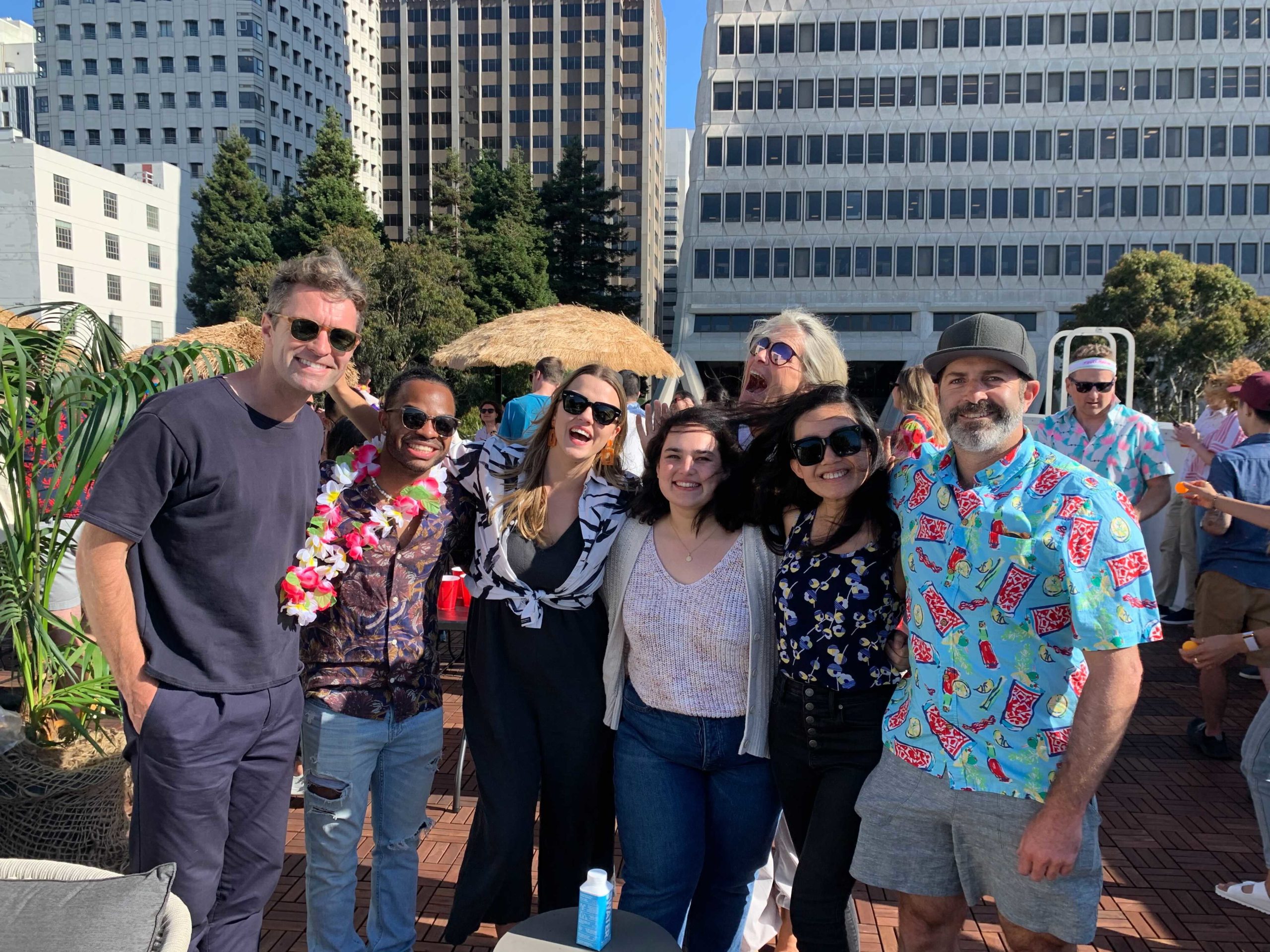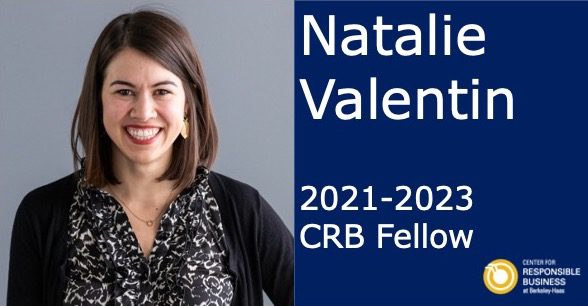2018 Patagonia Case Competition Top 10 Finalist Teams

As a company, Patagonia consistently stands at the forefront of sustainable business, implementing environmental solutions to its mission statement and serving as a model for other companies. This year, Patagonia is aiming to disrupt the carbon emission effects of production, consumption and disposal. Partnering with the Center of Responsible Business at the Haas School of Business, the environmental company hosted its third annual Patagonia Case Competition to allow diverse teams of graduate students from across the United States to tackle the negative effects of carbon. These teams share a common goal: carbon neutrality by 2025.
The top 10 teams presented their solutions to a panel of Patagonia judges on April 20th at the Haas School of Business. After stellar presentations from all 10 participating student groups, team Hoos Green from the University of Virginia took home the top prize. Team Lead the Change from Bard College took home second place, followed by team Everything Plus the Carbon Sink from Yale University in third.
Patrick Kelly, Madeline Omeltchenko, Alexandra Grant, Caroline Bales, Harry Ashforth“We truly believe that Patagonia has the ability to influence change beyond their own footprint” -Team Carolina Tar Heels
The team from the University of North Carolina at Chapel Hill stood out because of their holistic view on how to approach to the challenge. They stressed the importance of reaching all the way to Scope 3 emissions to influence stakeholders from the supply chain to customers. In order to influence emissions beyond Patagonia’s direct footprint, they argued that the company needs to begin with an “all of the above” approach. Their suggested solution centered on a Patagonia Green Fund to invest in carbon cutting programs.
Kathy Tian, Matthew Carney, Madeleine Carnemark, Neal Patel, Tae Lim
“Any good mitigation strategy requires a few things: excited consumers about carbon neutrality, find direct mitigation strategies, create offsets strategically, and move forward to a carbon negative future” -Team CO 2 Fast 2 Furious
At the heart of Patagonia is product. Team CO2 Fast 2 Furious’ design centric approach resonated with the Patagonia judges. They presented a ‘Net Neutral Collection’ that centered on product design and branding to empower customers to directly support the path to carbon neutrality via their purchases. The University of Michigan has been represented in the top 10 finalist teams for three years in a row.
THIRD PLACE
Stephanie Hsiung, Greg Chung, Jessica Harpole, Perry Leung, James Souder, Emily Auerbach
“By creating its own carbon offset, Patagonia would transform what it means to be truly carbon neutral” – Team Everything Plus the Carbon Sink
Team Everything Plus the Carbon Sink from Yale University took an overall ecosystem approach to the challenge. They received accolades for the broad context they applied to a carbon tax concept. According to judges, Patagonia has struggled to figure out how to effectively address carbon tax and pricing opportunities. Yale’s approach presented ideas around how the company can figure it out in “a unique and Patagonia way”. Yale is the only university to be represented in the 10 finalist teams three years in a row and also finish in the top 3 each year.
FIRST PLACE
Bryan Shadron, Stephanie Roe, Ben Strickland, Andrew Neils, John Tomko
“Patagonia can lead the industry and develop a roadmap for others to follow” – Team Hoos Green
Team Hoos Green from the University of Virginia emerged at the top of the pack with a model that “implicitly changed the [case] challenge, the very nature of the question” according to Dean Carter or Patagonia. Thinking about the problem not only as reaching carbon neutrality, but preventing the warming of the planet by 1.5 degrees reframed the conversation in a holistic way. The primary concepts of their proposed model were actionable and detailed, with real-world examples and a roadmap of partners who could help Patagonia reach their goal. Core to the presentation was drilling down on the functionality of the product to impact quality, durability, and carbon emissions; a tactic that struck at the heart of Patagonia’s ethos. The University of Virginia has been represented in the top 10 finalist teams for three years in a row, and half of the team members are participating for the second year in a row.
SECOND PLACE
Cory Skuldt, Alistair Hall, Sam Brundrett, Lindsey Strange, Savannah Parsons
“Traditional [carbon] offsets are so 20th century” -Team Lead the Change
Students representing Bard College tackled Patagonia’s carbon emissions through a model that drives growth through circularity. At the initial design phase, team Lead the Change proposed designing products for recycling, not just repair. A leasing model, particularly for children’s ware, would increase the product lifespan. And finally, a self-imposed production cap would challenge Patagonia to stick with their values at the most fundamental level. Judges felt the team “kicked them in the pants in regards to their values” and what it really means to do no harm.
Sachi Sobti, Claire Glossop Irani, Haesun Jessica Seok, Abdelrahman Alfahham, Charles Wurzer, Aishwarya Katta Adiseshaiah“Without cooperation with others, Patagonia will fail to address climate change on a meaningful level” – Team Neutrality Reality
Finalists from the University of Pennsylvania presented what Dean Carter of Patagonia called “powerful ideas for making change.” Their suggestions targeted scope 3 emissions, which make up 88% of Patagonia’s total emissions. Via corporate power purchasing agreements and increased recyclability of materials, team Neutrality Reality proposed a collaborative path forward on the road to carbon neutrality.
Derek Fodor, Jonathan Deffarges, Andrew Slotnick, Katherine Siu, Itamar Wigoder, Priya Ghosh“Leaving no carbon trace by 2025 is an ambitious goal that requires equally ambitious solutions” – Team PataGoNYU
Through three key ideas – manufacturing, materials, and social empowerment – team PataGoNYU believes that Patagonia will reach their goal of carbon neutrality by 2025. Beyond assuring that factory processes are profitable and sustainable, they looked to social empowerment as a primary component of their plan’s framework with education as a tool to reduce greenhouse gas emissions. Patagonia judges acknowledged they could have an extraordinary impact on the people they do business with in the world and that they need to lean into social justice more.
Ryan Stirling, David Garber, Roshan Vora, Alana Skorniakoff, Chris Harding, Julian Ortiz“It doesn’t take an MIT nerd to know that .000001 is a small number––and that is Patagonia’s carbon footprint” -Team PataSLOANia
There is a clear distinction between “good” vs. “bad” offsets. Team PataSLOANia from MIT took great care to ensure their suggestions are additive, permanent solutions. The presentation focused on a mirco-carbon accounting system that extends carbon data down to each product line and individual garment. The judges loved the detail and visual examples of what this program could look like and felt it might work uniquely for Patagonia. The team also addressed that Patagonia has already made significant strides on the path to carbon neutrality and has an opportunity to stand as a role model in helping the broader industry make progress. MIT has been represented in the top 10 finalist teams for three years in a row.
Griffin Klement, Katie Seeley, Kirsten Galbraith, Alfredo Costilla-Reyes, Philip Hinson, Benjamin Eckholm“1% for the planet, and a little more for carbon neutrality” – Team Net Zero Aggies
Team Net Zero Aggies from Texas A&M dug into cutting-edge solutions that “can and should happen” according to Patagonia judges. Their presentation showed how Patagonia can leverage cutting-edge technology such as blockchain to better track their carbon footprint. Using this increased transparency, Patagonia can empower customers and incentivize suppliers to support and feel ownership over specific impact areas and initiatives.
Bryan Young, Lyndsay Gordon, Nick Ferderer, Olivia Jacobs, Austin Morton“As an activist company with a long history fighting large companies and governments, Patagonia is able to lead the charge in allowing consumers to understand the true impact of their purchase.” – Team UW United
Team UW United from the University of Washington centered their presentation around a model customer named Emily. Emily is a young woman who, in 2025, discovers the steps Patagonia took to become carbon neutral. Team UW United’s vision to carbon neutrality centers on green transportation methods, patents on the development of bio-based textiles, regenerative agriculture and land management, and the creation of a carbon unit.
To watch the final announcement of this year’s winners, visit our Youtube channel at: https://bit.ly/2G6nlsP












